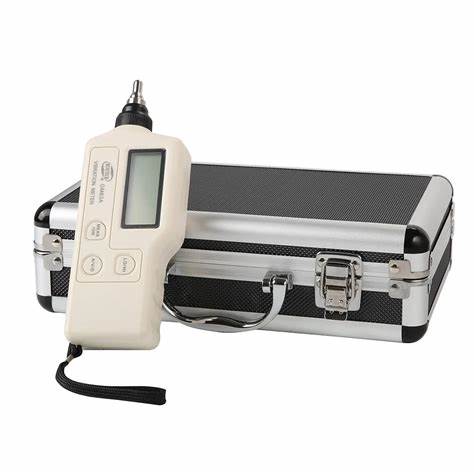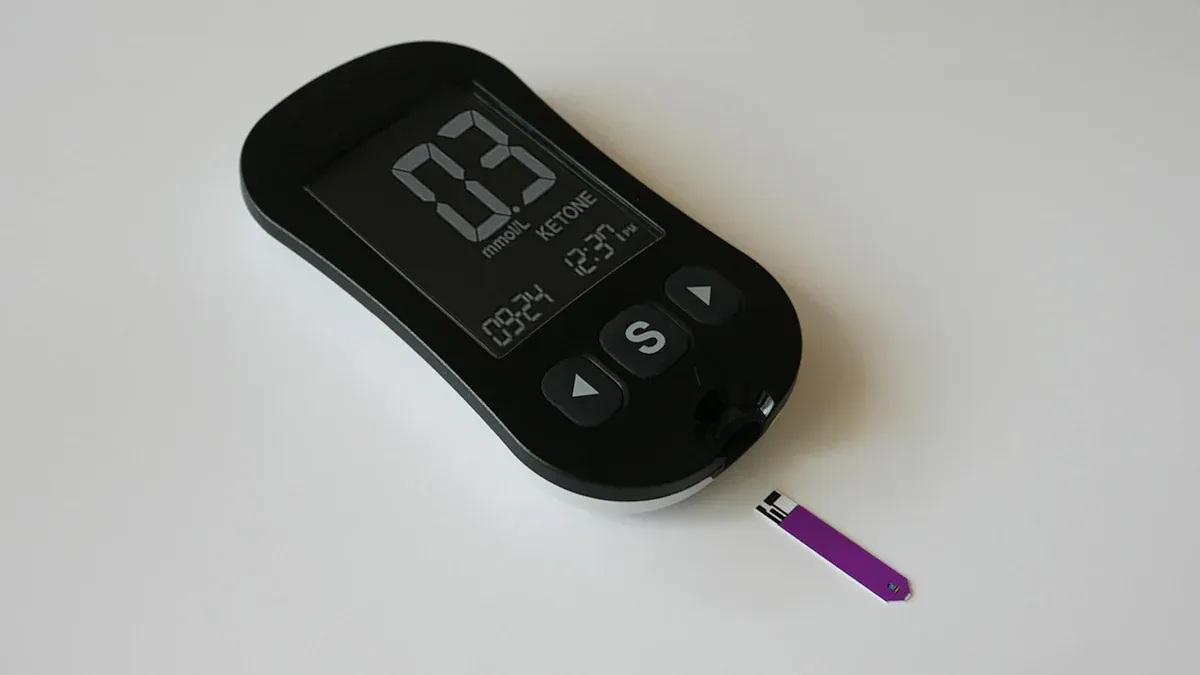Discover the 7 Leading Phone Vibration Testers for Professionals

If your phone's vibration feels weird or stops working, you need a good tool to check the problem. That’s when phone vibration testers are useful. These tools help you find and fix vibration motor problems fast. They are important for experts who want quick and correct repairs.
Key Takeaways
Phone vibration testers help find and fix motor problems fast.
Pick a tester that works well, fits many phones, and is simple to use.
A good tester saves time and makes repairs better for everyone.
What Are Phone Vibration Testers and Why Are They Important?
How They Help with Vibration Motor Problems
Ever notice your phone’s vibration feels strange or stops working? That’s when phone vibration testers are useful. These tools check what’s wrong with your phone’s vibration motor. They can find if it’s a hardware problem or a software issue. Vibration testers give clear results to help fix the problem fast.
For experts, this is a big help. Instead of guessing or wasting time, you can quickly find the issue. This saves effort and avoids replacing parts that still work. As phones get more advanced, having a good vibration tester is more important than ever.
Why Professionals Need Them
If you repair phones, you know good tools are a must. Phone vibration testers are not just helpful—they’re necessary. They help you find problems faster, so you can fix more phones in less time. This benefits both you and your customers.
More people now want tools for checking vibrations. Companies use them to save money and work better. This shows how important vibration testers are for keeping things running smoothly. With new tech like AI, these tools are getting even smarter and more accurate.
In a tough market, great tools make you stand out. Whether you fix phones or run a repair shop, a good vibration tester can improve your work and grow your business.
Key Features to Look for in Phone Vibration Testers
When picking a phone vibration tester, it should match your needs. Below are the main features to check:
Accuracy and Sensitivity
A tester must be accurate to spot small vibrations. For example:
High sensitivity (0.92–0.97) works well for walking vibrations.
Lower sensitivity (0.73–0.93) may happen during stair climbing.
Specificity above 0.95 gives clear results for different activities.
These features help you find issues faster on advanced phones.
Compatibility with Smartphone Models
Not all testers work with every phone model. Choose one that supports many devices. Some testers even adjust to newer models, making them future-ready.
Easy to Use and Portable
Complicated tools can slow you down. Pick testers with simple controls and clear guides. Lightweight testers are easier to carry, especially for busy repair shops.
Strong and Durable Design
Daily use needs a tough tester. Good materials make it last longer. Sturdy designs also work better in rough conditions.
Price and Value for Money
Cost matters, but quality is key. For example, the Fluke 810 gives fast answers and smart tips. It costs more but saves time and works reliably.
Finding the right tester means balancing these features with your needs. Whether you want accuracy, compatibility, or durability, the right tool makes your work easier.
1. Fluke 810
Specifications
The Fluke 810 is a trusted tool for checking vibrations. It has features made for professionals. Here are its key details:
Specification Type | Details |
|---|---|
Motor Speed Range | 200 rpm to 12000 rpm |
Usable Bandwidth | 2 Hz to 20 kHz |
Sampling Rate | 2.5 kHz to 50 kHz |
Dynamic Range | 128 dB |
Signal To Noise Ratio | 100 dB |
Size (H x D x W) | 18.56 x 7.00 x 26.72 cm (7.30 x 2.76 x 10.52 in) |
Weight (With Battery) | 1.9 kg (4.2 lb) |
Working Temperature | 0°C to 50°C (32°F to 122°F) |
Storage Temperature | -20°C to 60°C (-4°F to 140°F) |
This tool uses smart algorithms and real-world data. It helps find vibration problems and shows how serious they are.
Pros and Cons
The Fluke 810 gets mixed feedback from users. Here’s a simple list:
Pros:
Gives accurate results compared to other tools.
Helps experts make better repair choices.
Cons:
Software is old and not updated anymore.
Results take too long to load, which annoys users.
Limited problem detection, so it’s less flexible.
Not a full vibration analyzer; lacks advanced options.
Best Uses
The Fluke 810 works well for basic vibration checks. It’s great for finding motor problems and seeing how bad they are. If you’re new to vibration testing, this tool is a good start. But it’s not the best for collecting lots of data or tracking trends. It’s better for simpler jobs.
2. Fluke 805 Vibration Meter
The Fluke 805 is a trusted tool for checking vibrations. It’s made for experts who need fast and accurate results. This device has features that make it special among vibration meters.
Specifications
Here’s what the Fluke 805 can do:
Specification | Value |
|---|---|
Sensitivity | 100 mV g ± 10% |
Accuracy | At 100 Hz ± 5% |
Resolution | 0.01 g |
It has a built-in sensor for steady readings at all frequencies. The easy-to-use interface helps beginners operate it without trouble.
Pros and Cons
Every tool has good and bad points. Here’s a simple breakdown:
Pros:
Gives steady and clear results for vibration and bearings.
Smart sensor design reduces errors in measurements.
Shows how urgent repairs are with a four-level scale.
Lets you save data using USB for more analysis.
Cons:
Needs factory calibration, which can be a hassle.
Can’t measure in three directions at once, limiting use.
Best Uses
The Fluke 805 is great for experts who need quick checks. It works well for spotting bearing issues early. This tool is easy to use and gives reliable results. If you want a simple and effective vibration meter, this is a good pick.
3. SKF Pulse Vibration Meter
The SKF Pulse Vibration Meter is a handy tool. It helps make checking vibrations easy and quick. It’s great for experts who need a small, reliable device.
Specifications
This meter has a small sensor that links to your phone using Bluetooth. It works with the free SKF Pulse app, which you can get on iOS or Android. The app shows live data and gives expert-level analysis for free. You can check vibration levels and find problems anytime. Its lightweight build makes it simple to carry, whether in a shop or on-site.
Pros and Cons
Here’s a simple list of what’s good and not-so-good about the SKF Pulse Vibration Meter:
Pros | Cons |
|---|---|
Easy-to-use, portable sensor | No major cons found in reviews. |
Free app for iOS and Android | |
No extra fees for expert analysis | |
Reliable product and service |
Since there are no big downsides, this tool is a great pick for experts.
Ideal Use Cases
This tool is perfect for fast and accurate vibration checks. It’s great for finding issues with phone vibration motors or spotting unusual vibrations. Its small size and app features are helpful for technicians working in different places. Whether fixing one phone or handling many, this tool makes the job easier and quicker.
4. PCE-VM 5000
The PCE-VM 5000 is a strong tool for experts. It helps check vibrations with great accuracy. Whether fixing phones or working in factories, it’s very useful.
Specifications
Here’s what the PCE-VM 5000 can do:
Feature | Description |
|---|---|
4-Channel Measurement | Checks vibrations from four spots at the same time. |
Acceleration, Speed, & Displacement | Measures key details to check machine health. |
Wide Frequency Range | Detects vibrations from 10 Hz to 1 kHz for many uses. |
Large LCD Display | Bright screen makes it easy to read in any light. |
SD Card Data Storage | Saves data on an SD card for later use. |
Multiple Measurement Units | Lets you pick different units for various tasks. |
Extended Battery Life | Works longer without needing new batteries. |
Rugged Industrial Design | Tough build for hard-working environments. |
These features make it great for many different jobs.
Pros and Cons
Every tool has good and bad points. Here’s what to know about the PCE-VM 5000:
Pros:
Checks vibrations from four places at once.
Gives detailed results like speed and displacement.
Built to last in rough conditions.
Saves data easily with an SD card.
Cons:
Advanced features might confuse beginners.
A bit bigger than other portable testers.
Ideal Use Cases
The PCE-VM 5000 is great for experts needing detailed checks. It’s good for fixing phones or watching over machines. If you work in a shop or on-site, it’s very reliable. Its long battery life and tough design make it a great choice. Checking multiple spots at once saves time and effort.
5. TPI 9085
Specifications
The TPI 9085 is a small and strong tool for experts. It has a built-in sensor and simple controls, so it’s easy to use. Even beginners can handle it without trouble. Here are its main features:
Feature | Details |
|---|---|
Frequency Range | 10 Hz to 1 kHz |
Measurement Parameters | Measures speed, movement, and shaking |
Display | Bright screen for easy reading |
Data Storage | Saves up to 100 checks inside |
Battery Life | Works for 20 hours straight |
Weight | 1.2 lbs (light and easy to carry) |
This tool is tough and works well in hard conditions. It’s a good pick for experts who need a reliable device.
Pros and Cons
Every tool has good and bad points. Here’s what’s great and not-so-great about the TPI 9085:
Pros:
Light and easy to move around.
Gives clear and correct results for vibration checks.
Long-lasting battery for all-day use.
Keeps data safe for later review.
Cons:
Can only measure one direction at a time.
No wireless option to send data.
Ideal Use Cases
The TPI 9085 is great for fast and accurate vibration tests. It’s helpful for finding problems in phone vibration motors or small machines. If you work in a shop or need a tool for fieldwork, this device is a smart choice. Its easy design and strong build make it perfect for saving time and effort.
6. EXAMINER 1000 Vibration Meter
The EXAMINER 1000 is a handy tool for experts. It helps check vibrations in phone motors and small devices. Its features make it reliable and easy to use.
Specifications
Here’s what the EXAMINER 1000 offers:
Feature | Details |
|---|---|
Frequency Range | 10 Hz to 10 kHz |
Measurement Parameters | Measures speed, movement, and shaking |
Display | Bright LCD with backlight |
Data Storage | Holds up to 500 readings |
Connectivity | USB port for sharing data |
Battery Life | Lasts up to 25 hours |
Weight | 1.5 lbs (light and portable) |
This tool mixes advanced tech with simple controls. It’s a great pick for your repair kit.
Pros and Cons
Here’s what’s good and not-so-good about the EXAMINER 1000:
Pros:
Covers a wide range of vibration checks.
Lightweight and easy to carry anywhere.
Long battery life for all-day use.
USB makes sharing data simple.
Cons:
Costs more than similar tools.
Can only measure one direction at a time.
Ideal Use Cases
The EXAMINER 1000 is great for experts needing accurate tools. It’s perfect for checking phone motors or small machines. If you work in tight spaces or move around a lot, this tool’s small size and long battery life will help you finish tasks faster.
7. Vibration Meter App

Looking for a cheap and easy-to-carry option? The Vibration Meter App turns your phone into a vibration-checking tool. It’s great for quick checks or when you’re on the move.
Specifications
This app uses your phone’s accelerometer to measure vibrations. It shows live data like speed, frequency, and strength. Many apps also let you save or share the data later. Here’s what it offers:
Feature | Details |
|---|---|
Compatibility | Works on iOS and Android phones |
Measurement Range | Up to 20 kHz (depends on your phone) |
Data Export | Save as CSV or PDF files |
User Interface | Easy to understand and use |
Cost | Free or very cheap options |
The app’s accuracy depends on your phone’s sensors. Still, it works well for simple vibration checks.
Pros and Cons
Here’s a quick list of what’s good and not-so-good about the Vibration Meter App:
Pros:
Always with you since it’s on your phone.
Very affordable, with free versions available.
Simple to use, even for beginners.
No extra tools needed—just your phone.
Cons:
Accuracy depends on your phone’s hardware.
Only good for basic vibration checks.
Not ideal for professional-level testing.
Ideal Use Cases
This app is perfect for quick and easy vibration checks. It’s helpful for checking a phone’s vibration motor or for occasional use. But if you need detailed or expert-level results, a dedicated device is better.
Picking the best phone vibration tester can save time and improve accuracy. The seven tools mentioned have special features for various needs and budgets. Decide what’s most important—like being precise, easy to carry, or affordable. The right tester will help you find problems faster and make your repair work better.
FAQ
What’s the cheapest phone vibration tester for beginners?
If you’re new, try the Vibration Meter App. It’s free or very cheap, simple to use, and works on most phones. Great for quick checks! 📱
Can one tester work with all phone models?
Not every tester fits all phones. Choose tools with broad compatibility, like the SKF Pulse Vibration Meter, which works with many devices and systems.
How can I tell if my tester is accurate?
Look at the sensitivity and specificity ratings in its specs. High sensitivity gives exact readings, and specificity finds the real problem. Don’t forget to calibrate it often.
Tip: Calibrating your tester often keeps it working well and accurate.
See Also
Essential Techniques and Tools for Phone Vibration Testing
Top Instruments for Accurate Vibration Measurement Explained
Ten Essential Vibration Tools Every Engineer Must Have
Comprehensive Insights on Effective Vibration Measurement Techniques
Get Custom Micro DC Motors from
INEED Motors!
Leading Brand in Vibration Motor Manufacturing Industry
